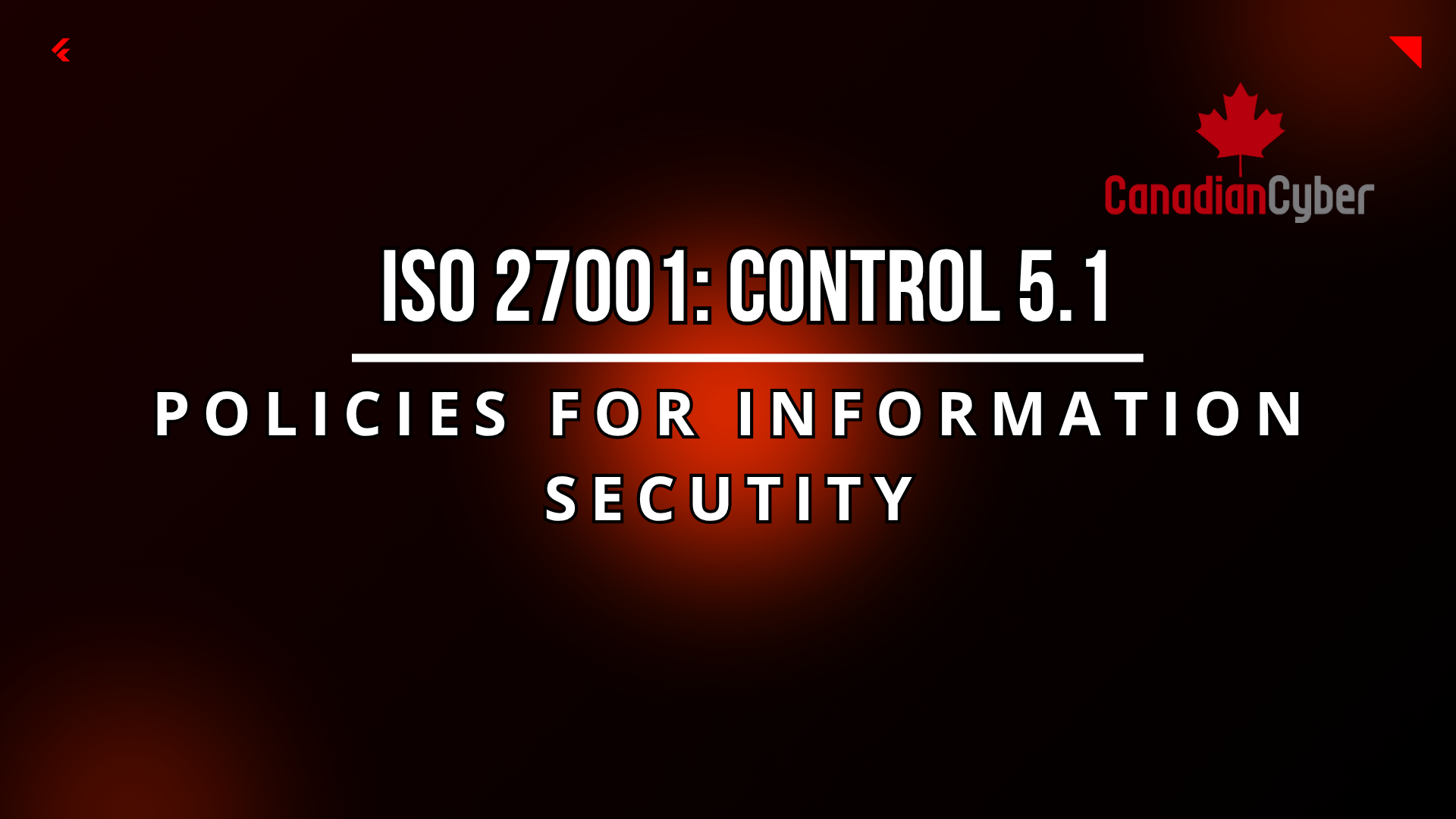ISO 27001 Control 5.1 emphasizes the need for formal, effective information security policies aligned with your business goals and compliance requirements. Canadian Cyber helps organizations draft, review, and maintain policies that protect data, meet standards like SOC 2, and guide every aspect of cybersecurity governance.

In the ever-evolving world of cybersecurity, policies are more than just documentation they are your first line of defense. ISO 27001 Control 5.1 stresses the importance of establishing clear, formal information security policies that align with your organization’s objectives and legal responsibilities.
Whether you’re starting your ISO 27001 journey or refining an existing ISMS, this control sets the tone for your entire security strategy.
🔒 Control Title: Policies for Information Security
📘 Source: ISO/IEC 27002:2022, Section 5.1
🧩 Control Category: Organizational
🔍 Attributes:
To ensure that your organization has clearly defined and communicated security policies that support the management direction and framework for securing information aligned with business, legal, regulatory, and contractual requirements.
1) Establish an Information Security Policy:
2) Develop Topic-Specific Policies:
3) Review and Update Policies:
4) Communicate and Acknowledge:
5) Policy Ownership and Accountability:
Policies are more than paperwork they are living documents that guide employee behavior, vendor expectations, and regulatory compliance. Without them, your cybersecurity efforts can become inconsistent, non-compliant, or ineffective.
At Canadian Cyber, we believe policies should be practical, people-friendly, and enforceable. Whether you’re building your ISMS from scratch or tightening up existing documentation, we help you define and communicate policies that actually support your cybersecurity goals.
Let us help you draft, review, and implement information security policies that satisfy ISO 27001, SOC 2, and more.
👉 Click here to talk to our ISO 27001 experts.